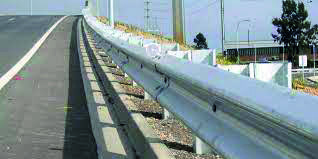Govt to install crash barriers on all bridges to prevent vehicles' fall

New Delhi: It seems Madhya Pradesh's Khalghat bridge accident, in which 13 passengers had died after bus fell into the Narmada river by breaking the guard rail at National Highway-3, has proved an eye opener for the Ministry of Road Transport and Highways (MoRTH) as the government has decided to install strong crash barriers by replacing old railings at all bridges on the NHs across the country to prevent vehicles from rolling over the barrier and falling over the other side.
The decision in this regard has been taken after Prime Minister Narendra Modi had expressed his sadness over the tragic incident that had happened in July.
In case of collision, the scientifically proven crash barriers of special designs would help in preventing the fall of over speeding bus, truck, car and two-wheeler from the bridge and bringing back the vehicles on the road resulting in no loss of lives.
As per the order, National Highways Authority of India (NHAI) has directed all project directors (PDs) to install bridge crash barriers in place of railings in the ongoing national highway projects.
"Apart from this, instructions have also been given to conduct a detailed study of small and big bridges built on NH across the country. After completing the study work of old bridges, including existing highway projects, the report has to be submitted to the technical division of NHAI in 15 days for implementing the action plan," the order said.
"As per the Indian Bridge Management System (IBMS) report, there are 1,72,517 major and minor bridges and culverts on national highways across the country. Out of these, 32,806 are minor bridges, while 3,647 are major bridges and 1,835 are extra long bridges," a senior official said, adding that the total number of culverts on NHs is 1,34,229. During the safety audit meeting of the NHAI, it was also discussed to install special crash barriers, which is a common bridge construction protocol followed in developed countries. However, the proposal was rejected by the members as installation cost of special crash barriers may be equal to the total project cost and in some cases its cost is more than that.
Notably, the Indian Road Congress (IRC), which is the government's apex governing body on road safety, is entrusted to fix the standards and specifications of bridges from time to time.
According to a senior official, the special feature of crash barriers is that its strength is much higher and stronger than the railings. The lower part of the barrier is designed in such a way that even if the speeding vehicle collides with it, the vehicle returns back on the road without any loss of lives.
Gaur was one of the 30 children who drowned when a bus carrying them lost control and fell off the Wazirabad bridge into the waters of the Yamuna. The bus, which had a capacity to seat 66 children, was packed with 117 students and two teachers from the Ludlow Castle-II school in north Delhi.
In 1997, 30 school children had died due to drowning when a bus carrying them lost control and fell off the Wazirabad bridge into the waters of the Yamuna.



